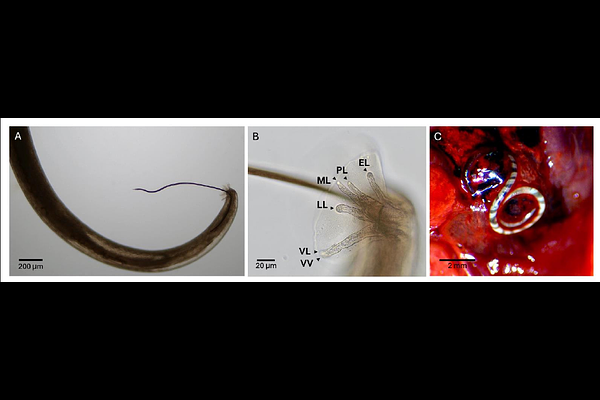Strong circulation of Angiostrongylus cantonensis in a protected Mediterranean wetland. Implications for resident and migratory wildlife

Strong circulation of Angiostrongylus cantonensis in a protected Mediterranean wetland. Implications for resident and migratory wildlife
Macedo, M. R. P. d.; Jaume-Ramis, S.; Paredes-Esquivel, C.
AbstractAngiostrongylus cantonensis, the rat lungworm, is a metastrongyloid nematode responsible for eosinophilic meningitis and an emerging pathogen of global concern. While its presence has been reported in various regions, including the Canary Islands and mainland Spain, data from the Balearic Islands remain limited. This study investigates the prevalence of A. cantonensis in rodents from the Natural Park of s`Albufera, Mallorca, a protected wetland ecosystem. A total of 43 rodents were captured and necropsied, including Rattus norvegicus, R. rattus and Apodemus sylvaticus. The overall prevalence of A. cantonensis in rats was 46.15% (95% CI: 30.43-62.62%), with no significant differences between species, seasons, or sexes. However, adult rats exhibited significantly higher infection rates than juveniles (p = 0.05). Notably, infection intensity and parasite abundance were positively correlated with host weight (rho = 0.60, p < 0.001). Given the co-occurrence of infected rodents and gastropods, our findings suggest the establishment of A. cantonensis in Mallorca, raising concerns about zoonotic transmission risks. The study highlights the need for continued surveillance and public health awareness to mitigate potential human and wildlife exposure in this ecologically significant area.